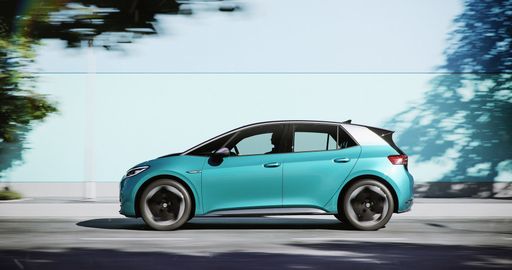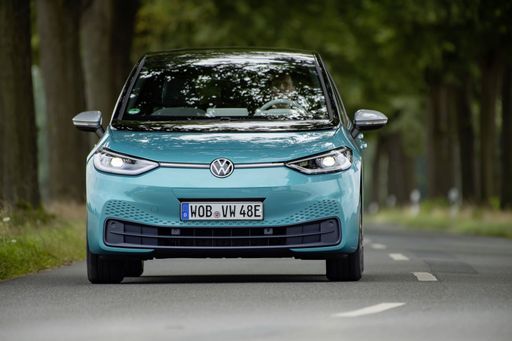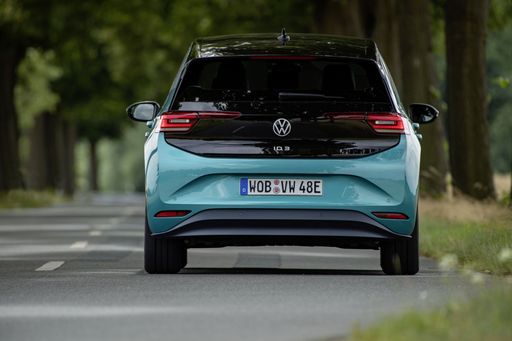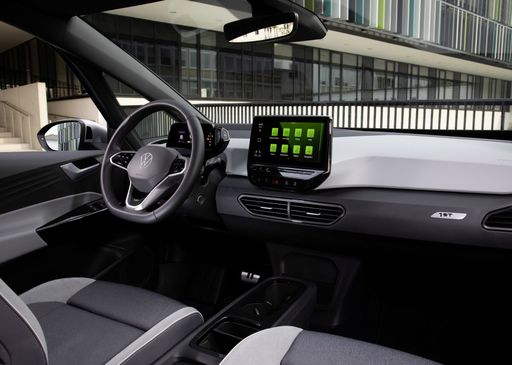Ford Puma vs VW ID.3 – erot ja hinnat vertailussa
Kustannukset ja kulutus
Taloudellisuudessa on mielenkiintoisia eroja näiden kahden mallin välillä.
Ford Puma on hinnassa jonkin verran edullisempi – sen lähtöhinta on 28900 €, kun taas VW ID.3 maksaa 33300 €. Ero on noin 4430 €.
Sähkönkulutuksessa etu on Ford Puma:lla: se kuluttaa 13.10 kWh /100 km ja on vähän energiatehokkaampi kuin VW ID.3, jonka kulutus on 14.50 kWh. Ero on noin 1.40 kWh.
Toimintamatkassa VW ID.3 suoriutuu erottuva paremmin: se yltää jopa 605 km:een, noin 229 km enemmän kuin Ford Puma.
Moottori ja suorituskyky
Teho, vääntömomentti ja kiihtyvyys ovat autoharrastajien klassisia mittareita – ja erot tulevat tässä hyvin esiin.
Moottoritehossa VW ID.3 on merkittävä etulyöntiasemassa – 326 hv verrattuna 168 hv:een. Ero on noin 158 hv hv.
Kiihdytyksessä 0–100 km/h VW ID.3 on erottuva nopeampi – se saavuttaa 100 km/h ajassa 5.70 s, kun taas Ford Puma tarvitsee 7.40 s. Ero on noin 1.70 s sekuntia.
Huippunopeudessa Ford Puma on tuskin havaittava edellä – se yltää 210 km/h:een, kun taas VW ID.3 saavuttaa 200 km/h. Ero on noin 10 km/h.
Myös vääntömomentissa näkyy ero: VW ID.3 vetää selvä voimakkaammin, 545 Nm verrattuna 290 Nm:een. Eroa on noin 255 Nm.
Tila ja käytännöllisyys
Tehon ohella arjessa ratkaisevat mukavuus ja käytännöllisyys. Tässä selviää, kumpi auto on monipuolisempi ja tilavampi.
Istuimet: tarjoaa enemmän istumapaikkoja – vs. .
Omapainossa Ford Puma on selvästi havaittava kevyempi – 1316 kg verrattuna 1787 kg:een. Painoero on noin 471 kg.
Tavaratilan koossa Ford Puma tarjoaa erottuva enemmän – 523 L verrattuna 385 L:een. Ero on noin 138 L.
Maksimikantavuudessa Ford Puma pärjää vähäinen paremmin – jopa 1283 L, noin 16 L enemmän kuin VW ID.3.
Kantavuudessa VW ID.3 on kevyt parempi – 473 kg verrattuna 469 kg:een. Ero on noin 4 kg.
Kuka voittaa vertailun?
VW ID.3 osoittautuu olevan antaa kilpailijalle vähän mahdollisuuksia ja saa siksi tittelin DriveDuel Champion!
Tässä vertailussa VW ID.3 on monipuolisempi kokonaisuus.
 @ Volkswagen AG / VW Media
@ Volkswagen AG / VW Media
VW ID.3
Kustannukset ja kulutus
Näytä yksityiskohtainen analyysi
Moottori ja suorituskyky
Näytä yksityiskohtainen analyysi
Mitat ja kori
Näytä yksityiskohtainen analyysi
Ford Puma
Ford Puma on ketterä ja trendikäs pieni crossover, joka yhdistää persoonallisen muodon ja arkikäytössä toimivan fiksuuden. Ajettavuus on yllättävän eläväistä ja sisustus ovelan käytännöllinen — erinomainen valinta ostajalle, joka haluaa arkeen ripauksen hauskuutta ilman turhaa pröystäilyä.
Tiedot @ Ford Motor Company / Ford Media Center
@ Ford Motor Company / Ford Media Center
 @ Ford Motor Company / Ford Media Center
@ Ford Motor Company / Ford Media Center
 @ Ford Motor Company / Ford Media Center
@ Ford Motor Company / Ford Media Center
 @ Ford Motor Company / Ford Media Center
@ Ford Motor Company / Ford Media Center
VW ID.3
VW ID.3 on käytännöllinen ja ketterä sähköauto, jonka moderni ja avara sisustus tuntuu ajatellulta arjen matkustukseen. Se on ostajalle fiksu valinta: mukava pidemmilläkin siirtymillä, ketterä kaupungissa ja tekniikka käytännöllistä ilman turhaa häröilyä.
Tiedot @ Volkswagen AG / VW Media
@ Volkswagen AG / VW Media
 @ Volkswagen AG / VW Media
@ Volkswagen AG / VW Media
 @ Volkswagen AG / VW Media
@ Volkswagen AG / VW Media
 @ Volkswagen AG / VW Media
@ Volkswagen AG / VW Media
 @ Volkswagen AG / VW Media
@ Volkswagen AG / VW Media
 @ Volkswagen AG / VW Media
@ Volkswagen AG / VW Media
 @ Volkswagen AG / VW Media
@ Volkswagen AG / VW Media
 @ Ford Motor Company / Ford Media Center
@ Ford Motor Company / Ford Media Center
|
 @ Volkswagen AG / VW Media
@ Volkswagen AG / VW Media
|
|
|
|
Kustannukset ja kulutus |
|
|---|---|
|
Hinta
28900 - 42400 €
|
Hinta
33300 - 57500 €
|
|
Kulutus L/100km
5.4 - 5.9 L
|
Kulutus L/100km
-
|
|
Kulutus kWh/100km
13.1 - 13.9 kWh
|
Kulutus kWh/100km
14.5 - 15.8 kWh
|
|
Sähköinen toimintasäde
361 - 376 km
|
Sähköinen toimintasäde
383 - 605 km
|
|
Akun kapasiteetti
43 kWh
|
Akun kapasiteetti
52 - 79 kWh
|
|
CO2
0 - 135 g/km
|
CO2
0 g/km
|
|
Polttoainesäiliön tilavuus
42 L
|
Polttoainesäiliön tilavuus
-
|
Mitat ja kori |
|
|---|---|
|
Kori
SUV
|
Kori
Hatchback
|
|
Istuimet
5
|
Istuimet
5
|
|
Ovet
5
|
Ovet
5
|
|
Omamassa
1316 - 1563 kg
|
Omamassa
1787 - 1993 kg
|
|
Tavaratila
456 - 523 L
|
Tavaratila
385 L
|
|
Pituus
4186 - 4226 mm
|
Pituus
4264 mm
|
|
Leveys
1805 mm
|
Leveys
1809 mm
|
|
Korkeus
1550 - 1555 mm
|
Korkeus
1564 mm
|
|
Maksimi tavaratila
1216 - 1283 L
|
Maksimi tavaratila
1267 L
|
|
Kantavuus
367 - 469 kg
|
Kantavuus
437 - 473 kg
|
Moottori ja suorituskyky |
|
|---|---|
|
Moottorityyppi
Sähkö, Bensiini MHEV
|
Moottorityyppi
Sähkö
|
|
Vaihteisto
Automaatti, Manuel
|
Vaihteisto
Automaatti
|
|
Vaihteiston tyyppi
Alennusvaihteisto, Manuaalivaihteisto, Kaksoiskytkin automaatti
|
Vaihteiston tyyppi
Alennusvaihteisto
|
|
Vetotapa
Etuveto
|
Vetotapa
Takaveto
|
|
Teho hv
125 - 168 hv
|
Teho hv
170 - 326 hv
|
|
Kiihtyvyys 0-100 km/h
7.4 - 9.8 s
|
Kiihtyvyys 0-100 km/h
5.7 - 8.2 s
|
|
Huippunopeus
160 - 210 km/h
|
Huippunopeus
160 - 200 km/h
|
|
Vääntömomentti
170 - 290 Nm
|
Vääntömomentti
310 - 545 Nm
|
|
Sylinterien lukumäärä
3
|
Sylinterien lukumäärä
-
|
|
Teho kW
92 - 124 kW
|
Teho kW
125 - 240 kW
|
|
Iskutilavuus
999 cm3
|
Iskutilavuus
-
|
Yleiset |
|
|---|---|
|
Mallivuosi
2025
|
Mallivuosi
2024 - 2025
|
|
CO2-tehokkuusluokka
A, D
|
CO2-tehokkuusluokka
A
|
|
Merkki
Ford
|
Merkki
VW
|
Onko Ford Puma saatavana eri vetotavoilla?
Mallia tarjotaan Etuveto-versiona.
Näytetyt hinnat ja tiedot ovat arvioita, jotka perustuvat Saksan listahintoihin, ja voivat vaihdella maittain. Nämä tiedot eivät ole oikeudellisesti sitovia.
